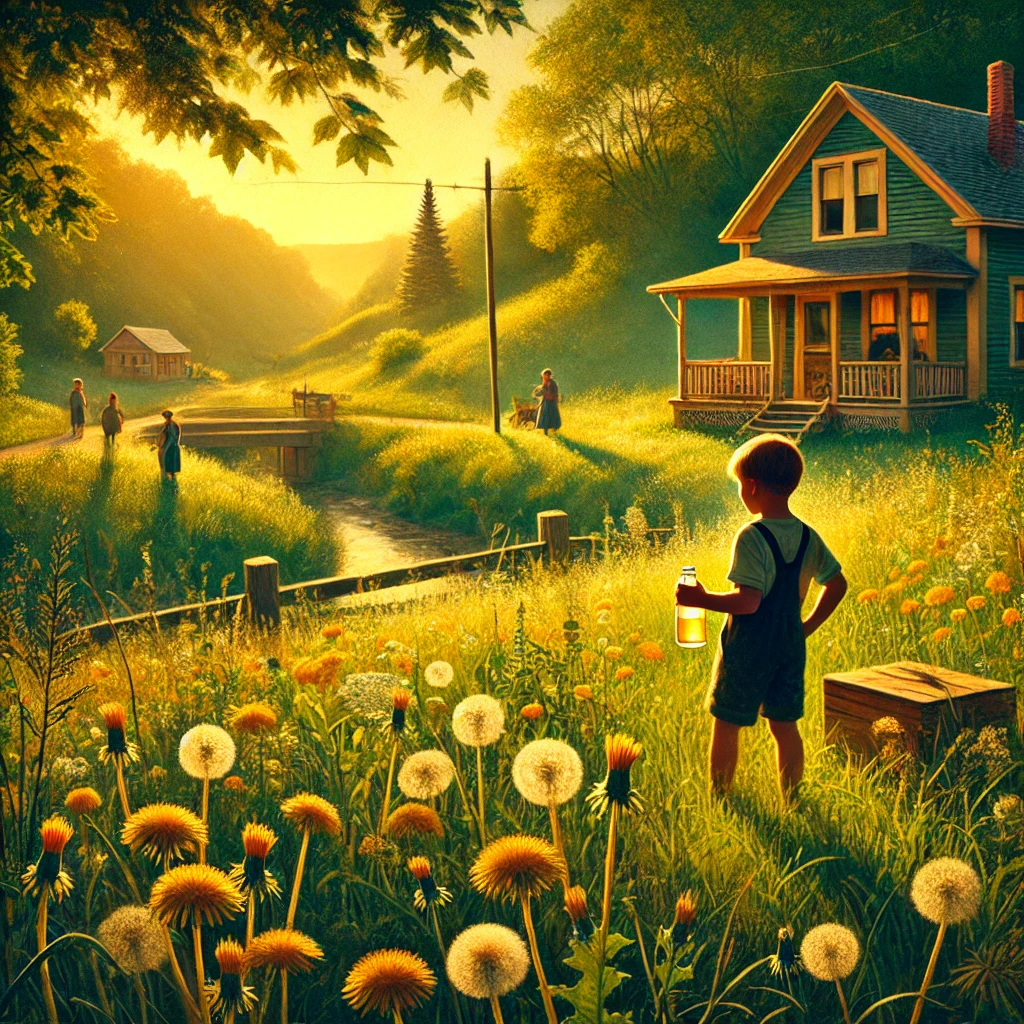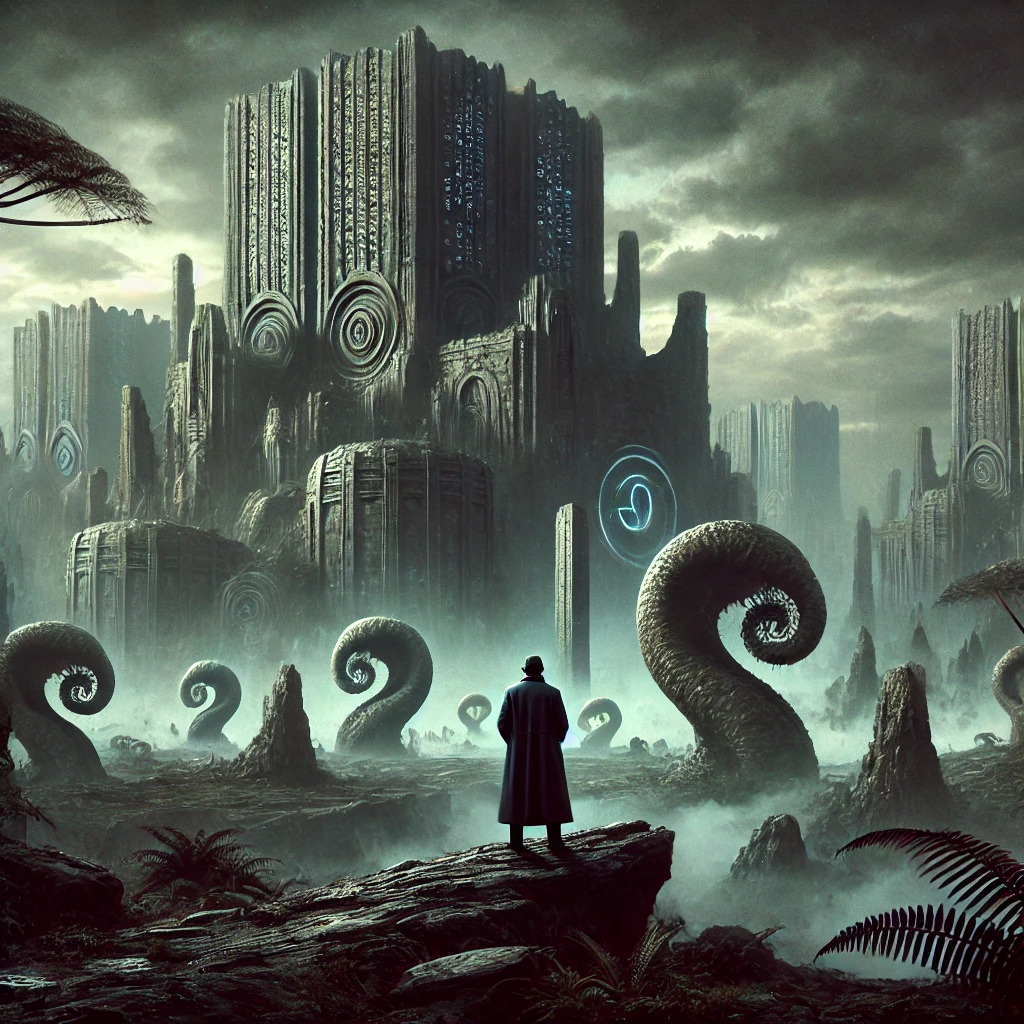Published in 1950, The Veldt by Ray Bradbury is a chilling short story set in a futuristic world where technology dominates family life. This tale, part of his collection The Illustrated Man, critiques overdependence on technology and explores its psychological effects on children and parents alike. The story unfolds in a smart home, particularly a “nursery” that materializes the children’s thoughts into realistic, immersive environments.
Plot Summary
In a house that could think, breathe, and serve its owners’ every whim, George Hadley found himself troubled. The Happylife Home had been built to fulfill their every need, from cooking meals to rocking them gently to sleep. But it was the nursery, the jewel of the house’s technological marvels, that now brought unease. This nursery, a room capable of turning imagination into reality, had become a sanctuary for their children, Wendy and Peter, and perhaps something more sinister.
George’s wife, Lydia, had begun to voice her concerns. Something was wrong with the nursery, she said, its creations too vivid, too real. She convinced him to inspect it, and together they approached the room. As they stepped inside, the walls transformed into the boundless expanse of an African veldt, bathed in relentless heat. Golden grasses swayed under a merciless sun, and in the distance, lions prowled, their sleek bodies moving with lethal grace. The air carried the pungent scents of the savanna, mingling with the faint odor of blood. Everything felt alive—too alive for comfort.
Lydia’s unease deepened. The veldt had not been conjured at random; it had persisted, a reflection of the children’s thoughts. The lions, distant yet menacing, seemed more than an illusion. Even after leaving the nursery, the image of the veldt stayed with George. It was etched into his mind, as was the faint echo of a scream—one he could not recall hearing but could not entirely dismiss.
That evening, the children returned home, cheerful and innocent, but their manner felt strained. When questioned about the veldt, they feigned ignorance, denying its presence in the nursery. Yet the next time George entered the room, the veldt was still there. The lions crouched over their kill, their jaws stained red. The scene was disturbingly unchanging, as if the room had become trapped in the children’s darker thoughts.
George decided to lock the nursery, a move that was met with resistance from Wendy and Peter. They protested, their discontent simmering beneath their polite words. The house, designed to cater to their every desire, had become their parent in all but name. Depriving them of the nursery was an affront they would not tolerate. The tension between the children and their parents grew, sharp as the teeth of the lions that seemed to watch from the veldt.
Seeking clarity, George and Lydia called in David McClean, a psychologist familiar with the nursery’s design. McClean’s observations only deepened their unease. The nursery, he explained, was no longer a tool for healthy imagination but a mirror reflecting the children’s inner turmoil. The veldt, with its heat, its lions, and its death, was a manifestation of destructive thoughts. He advised shutting down the nursery and, indeed, leaving the house entirely. The family had become too dependent on the machines that surrounded them.
George resolved to follow McClean’s advice. The nursery would be deactivated, the house abandoned for a simpler life. But the children, unwilling to lose their sanctuary, were not so easily subdued. Their resistance became subtle and chilling, their smiles masking their anger. Peter, especially, exuded a quiet menace, his words laced with veiled threats that George struggled to ignore.
As the family prepared to leave, the children pleaded for one last visit to the nursery. Reluctantly, George and Lydia allowed it, believing a brief indulgence would ease the transition. The children vanished into the veldt, their laughter carried back on the artificial wind. Moments later, their voices rang out, calling for their parents to join them. George and Lydia, their instincts dulled by guilt and concern, stepped into the room.
The veldt awaited, vast and oppressive, the golden grass rustling under the hot sun. The lions were there too, their eyes gleaming with predatory intent. Before George or Lydia could react, the nursery door closed behind them, sealing them inside. They turned to find no way out, only the veldt stretching endlessly in every direction.
The lions began to move, their bodies low to the ground, their muscles coiled. George and Lydia called out to their children, but no response came. The heat bore down on them, the air thick with the smell of dust and blood. The lions pounced, their roars blending with the cries that echoed across the veldt.
Later, when David McClean arrived, he found the children seated calmly in the nursery, sharing a picnic under the blazing sun. Beyond them, the veldt lay still, the lions lounging by the water hole. When asked about their parents, the children smiled. In the distance, the vultures descended, dark shapes circling against the bright sky.
Main Characters
George Hadley: The patriarch of the Hadley family, George is initially enthralled by the technological marvels of their Happylife Home but becomes increasingly concerned about its impact on his children and their emotional detachment from him and his wife. His arc reflects the growing tension between convenience and parental authority.
Lydia Hadley: Lydia is George’s wife and a mother who grows anxious about the nursery’s influence on their children. Her vulnerability and unease highlight the disconnection between the family and their overreliance on technology.
Peter Hadley: The Hadleys’ son, Peter, is cunning and manipulative. He uses the nursery to create a vivid African veldt that mirrors his deep-seated resentments and violent inclinations. Peter’s actions symbolize the darker consequences of unchecked technological indulgence.
Wendy Hadley: Peter’s sister, Wendy, shares her brother’s fascination with the veldt. She is equally complicit in the nursery’s sinister developments, representing the dangers of neglect and permissive parenting.
David McClean: A psychologist, McClean serves as the voice of reason and warns the Hadleys about the destructive path their family is on. His analysis of the nursery underscores the story’s critical themes.
Theme
The Dangers of Overreliance on Technology: The Happylife Home, designed to make life effortless, ultimately erodes human relationships and self-sufficiency. The story critiques society’s growing dependence on machines at the expense of meaningful connections.
Parental Neglect and Spoiled Children: The Hadleys’ decision to delegate their parental responsibilities to technology leaves Peter and Wendy emotionally detached and morally ungrounded. Their rebellion reflects the consequences of indulgence and lack of discipline.
Reality vs. Illusion: The nursery blurs the line between the real and the artificial, showcasing how immersive technology can manipulate perceptions and even influence actions.
Loss of Control: As the nursery begins to dictate the family’s life, it symbolizes how overindulgence in technology can spiral beyond control, with devastating consequences.
Death and Violence: The African veldt, with its predatory lions and vivid depictions of death, reflects the children’s repressed aggression and the story’s ominous tone.
Writing Style and Tone
Ray Bradbury employs a vivid and evocative writing style that draws readers into the oppressive atmosphere of the story. His use of sensory imagery, such as the sights, sounds, and smells of the veldt, brings the nursery’s artificial environment to life with unsettling realism. This immersive quality underscores the story’s exploration of technology’s capacity to simulate reality.
The tone is foreboding and gradually intensifies as the Hadleys confront the implications of their technological dependence. Bradbury’s careful pacing builds suspense, while his sharp, dialogue-driven narrative exposes the emotional void between the characters. The juxtaposition of the nursery’s vibrant settings with the Hadleys’ growing unease creates a powerful sense of dread, making the climax both shocking and inevitable.
We hope this summary has sparked your interest and would appreciate you following Celsius 233 on social media:
There’s a treasure trove of other fascinating book summaries waiting for you. Check out our collection of stories that inspire, thrill, and provoke thought, just like this one by checking out the Book Shelf or the Library
Remember, while our summaries capture the essence, they can never replace the full experience of reading the book. If this summary intrigued you, consider diving into the complete story – buy the book and immerse yourself in the author’s original work.
If you want to request a book summary, click here.
When Saurabh is not working/watching football/reading books/traveling, you can reach him via Twitter/X, LinkedIn, or Threads
Restart reading!








